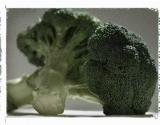Main Menu
Buying Organic Food
Conventially farmed fruits and vegetables, as well as traditionally farmed meats, may contain pesticide residues, harmful antibiotics, and dangerous chemicals. Here’s how to get smart about buying organic and protecting yourself and your family from these health risks.
You may have heard of the Dirty Dozen in regard to organic foods: these are the 12 fruits and vegetables with the highest pesticide residues. As of 2011, the Dirty Dozen are: apples (including apple juice and apple sauce); celery; strawberries; peaches; spinach; nectarines; grapes (and raisins); bell peppers; potatoes; blueberries; lettuce; kale; and collard greens. Try to buy organic whenever you purchase these fruits and vegetables.
The more fat a meat has, the more pesticide residue it’s likely to contain. Chicken thighs and pork have the most; leaner meats have much less. Choosing organic meat means you’re less likely to consume growth hormones, antibiotics, or genetically modified products, either in the meat itself, or through the feed the animal has consumed.
Pesticides have also been found in milk; the USDA Pesticide Data Program has counted 12 different pesticides in milk. This is true, unfortunately, for both organic and conventionally produced milk. However, organic milk doesn’t contain bovine growth hormone or antibiotics, which may mean it’s healthier. There are also some conventional brands of milk that don’t contain growth hormone.
Some commonly used pesticides have been shown to be harmful to the honeybee population, which is now in steady decline. Fewer honeybees means less pollination, which puts up to 30% of the US food supply at risk: without pollination, oranges, apples, cucumbers, cherries, grapes, watermelons, squash, almonds, and even certain types of beef will become scarce. Cows who eat alfalfa will be forced to switch to different diets, because alfalfa relies on pollination for propagation – this will mean grass- and legume-fed beef will become harder to find. These different diets may include animal parts, which are obviously much less healthy for the cow – and for its consumers.
Organic food can be expensive to buy. For cheaper organic foods, look for organic sections at your local supermarket. Visit farmers’ markets. The produce and meat may still end up being more expensive than the conventional alternatives, but farmers’ markets will be cheaper than pricey organic boutique supermarkets. If one of these supermarkets is your best bet, buy organic nuts, beans, lentils and grains from the bulk bins, and try to buy in bulk as often as possible for more savings.
Try buying a share in a community-supported agriculture program – these programs usually send out boxes of organic food every week. If that’s too expensive, ask if you can buy half a share instead. You can also join a co-op or a buying club, where members buy in bulk and then split the food up among themselves – you may end up getting organic food at up to half-price this way. If you can’t find a buyer’s club, try forming one with friends and family.
This information is solely for informational and educational purposes only. The publication of this information does not constitute the practice of medicine, family planning, child psychology, marriage counseling and this information does not replace the advice of your physician or other health care or mental health care provider. Neither the owners or employees of NaturalFamilyOnline.com or the author(s) of site content take responsibility for any possible consequences from any treatment, procedure, exercise, dietary modification, application of medication or any other action involving the care of yourself or any family members which results from reading this site. It is always best to speak with your primary health care provider before engaging in any form of self treatment. Additional information contained in our Legal Statement


